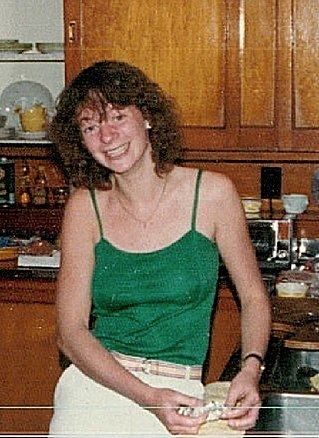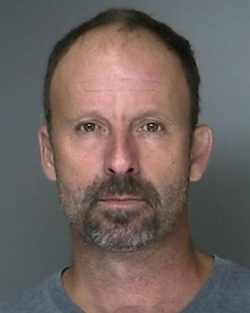
Paul Kenneth Bernardo, also known as Paul Jason Teale, is a Canadian serial rapist and serial killer dubbed the Scarborough Rapist, the Schoolgirl Killer and, together with his former wife Karla Homolka, one of the Ken and Barbie Killers. He is known for initially committing a series of rapes in Scarborough, Ontario, a district of Toronto, between 1987 and 1990, before committing three murders with Homolka; among these victims was Karla's younger sister, Tammy Homolka.

Philip Walter Owen was the 36th mayor of Vancouver, British Columbia from 1993 to 2002, making him one of Vancouver's longest serving mayors. His father was Walter S. Owen, who was Lieutenant Governor of British Columbia from 1973 to 1978.
Karla Leanne Homolka, also known as Karla Leanne Teale, Leanne Teale and Leanne Bordelais, is a Canadian serial killer who acted as an accomplice to her husband, Paul Bernardo, taking active part in the rapes and murders of at least three minors in Ontario – including her own sister, Tammy Homolka – between 1990 and 1992.

The Highway of Tears is a 719-kilometre (447 mi) corridor of Highway 16 between Prince George and Prince Rupert in British Columbia, Canada, which has been the location of crimes against many women, beginning in 1970 when the highway was completed. The phrase was coined during a vigil held in Terrace, British Columbia in 1998, by Florence Naziel, who was thinking of the victims' families crying over their loved ones. There are a disproportionately high number of Indigenous women on the list of victims, hence the association with the Missing and Murdered Indigenous Women (MMIW) movement.

Robert William Pickton, also known as the Pig Farmer Killer or the Butcher, was a Canadian serial killer and pig farmer. After dropping out of school, he left a butcher's apprenticeship to begin working full-time at his family's pig farm, and inherited it in the early 1990s.

Lee Mellor is an Anglo-Canadian author, scholar, criminologist and songwriter.

Steven Gerald James Wright is an English serial killer, also known as the Suffolk Strangler. He is currently serving life imprisonment for the murder of five women who worked in Ipswich, Suffolk. The killings took place during the final months of 2006 and Wright was found guilty in February 2008 and given a whole life order.
The Women's Memorial March is an annual event which occurs every February 14th, in honour of the lives of missing and murdered indigenous women and girls (MMIWG) across Canada and the United States. This event is also a protest against class disparity, racism, inequality and violence.

Theresa Allore was a Canadian college student who disappeared on Friday, November 3, 1978, from Champlain College Lennoxville in the Eastern Townships of Quebec. She was later found dead under suspicious circumstances. Allore's brother later started the true crime podcast Who Killed Theresa.
Kim Rossmo is a Canadian criminologist specializing in geographic profiling.
Melissa Ann Shepard, also known as Melissa Ann Weeks, Melissa Ann Friedrich, Melissa Ann Shephard and Melissa Ann Stewart, sometimes given the sobriquet of Internet Black Widow, is a Canadian murderer and habitual offender. Shepard has been convicted of manslaughter in the death of one of her husbands, convicted of poisoning another, and convicted of numerous fraud offenses.

John Bittrolff is an American convicted murderer and former suspect in the Gilgo Beach serial killings case. In July 2014, he was charged with the murders of Rita Tangredi and Colleen McNamee. He was also a suspect in the murder of a third woman, Sandra Costilla, prior to the capture of alleged serial killer Rex Heuermann. Bittrolff became a suspect in the unsolved murders after his brother, Timothy Bittrolff, was partially matched to DNA found on the bodies in 2013. Timothy Bittrolff submitted the sample after violating an unrelated order of protection, in 2013.

Unclaimed, released as On the Farm in some international markets, is a Canadian TV film starring Elle-Máijá Tailfeathers, Sara Canning, Patrick Gallagher, Kevin McNulty, Tantoo Cardinal, and Sarah Strange. It is a dramatic narrative adapted from journalist Stevie Cameron's 2010 book of the same name, examining the years leading to serial killer Robert Pickton's arrest and the court proceedings before his conviction.
Scott William Cox is a suspected American serial killer, convicted on two separate counts of homicide in 1993 in Portland, Oregon, and suspected of many more. He was sentenced to 25 years in prison but was granted parole in 2013, five years early. He currently is serving a post-prison supervision term of life. He is also the prime suspect in 20 unsolved murder cases throughout the United States and Canada, although charges were never brought against him.
ProjectE-Pana is a Royal Canadian Mounted Police (RCMP) task force created in 2005 with the purpose of solving cases of missing and murdered persons along a section of Highway 16, all female, between Prince Rupert, British Columbia and Prince George, British Columbia, dubbed the Highway of Tears. Though it started with the scope of investigating victims of Highway 16, within a year of formation, it morphed to include victims along Highways 5, 24 and 97. It is no longer specifically dedicated to Highway of Tears cases.
Lorimer Shenher is a Canadian writer and former police officer. The former head of the Missing Persons Unit of the Vancouver Police Department, he is most noted for his 2015 non-fiction book Lonely Section of Hell: The Botched Investigation of a Serial Killer Who Almost Got Away, about the regulatory and bureaucratic failures that hampered his investigation of serial killer Robert Pickton. The book was a shortlisted finalist for the Edna Staebler Award and the City of Vancouver Book Award in 2015.

Manon Dubé was a 10-year-old Canadian girl from Sherbrooke, Quebec who disappeared on January 27, 1978, in the Eastern Townships of Quebec, and was found dead in Ayer's Cliff on March 24, 1978. Although the precise cause of Dubé's death remains uncertain, Canada's National Post has unveiled compelling evidence that she was murdered. After discovering links between the circumstances of Dubé's case and the close resemblance to the recent deaths of two other girls, Theresa Allore and Louise Camirand, they theorized that the three deaths may have been committed by the same person. After bringing in geographic profiler, Kim Rossmo, an expert in connecting serial crimes, he strongly suggested that a serial killer was operating in the area during the late 1970's.
Alun Kyte, known as the Midlands Ripper, is an English double murderer, serial rapist, child rapist, paedophile and suspected serial killer. He was convicted in 2000 of the murders of two sex workers, 20-year-old Samo Paull and 30-year-old Tracey Turner, whom he killed in December 1993 and March 1994 respectively. After his conviction, investigators announced their suspicions that Kyte could have been behind a number of other unsolved murders of sex workers across Britain in the 1980s and 1990s. He was apprehended due to the ground-breaking investigations of a wider police inquiry named Operation Enigma, which was launched in 1996 in response to the murders of Paull, Turner and of a large number of other sex workers. Kyte was sentenced to a minimum of 25 years imprisonment for the murders of Paull and Turner.










